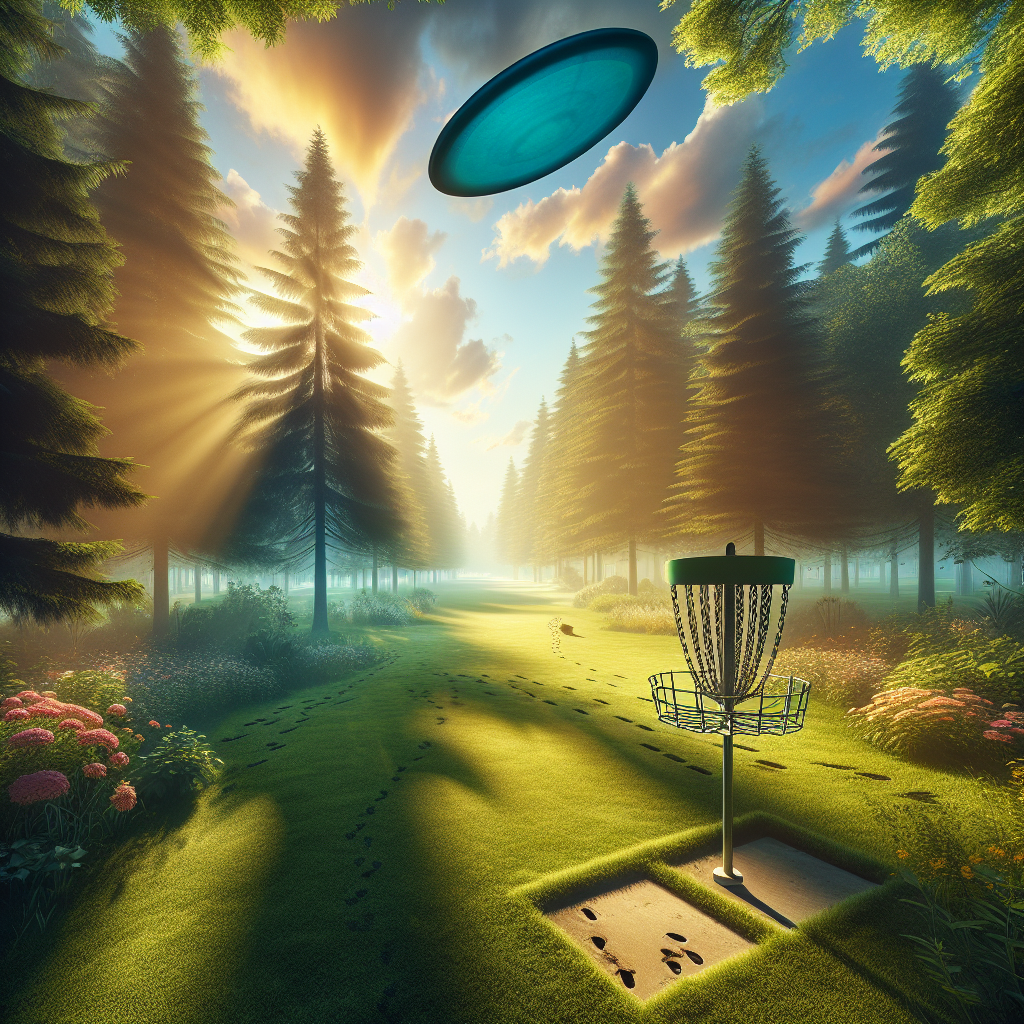If you’ve been searching for an exciting introduction to disc golf, or maybe you’re seeking new ways to improve your game, the “The Complete Guide to Disc Golf: Playing and Techniques” is here for you. This comprehensive guide is packed with insights that will enhance your understanding of the game. Here, you’ll uncover not only the basics of how to play disc golf but also the competitive techniques that could give you an edge in the game. The guide is carefully constructed for enthusiasts at every level, so don’t hesitate to explore your potential in this thrilling sport.
Understanding the Basics of Disc Golf
Disc golf is an engaging outdoor sport that is fast gaining popularity. As with any new hobby, there are basics you need to grasp to get started. Once you understand the rudiments, you’ll find it easy to improve and enjoy this fantastic game.
Basic rules of disc golf
Disc golf shares many rules with traditional golf. The aim is to complete each hole in the least possible throws. A hole begins with a throw from a tee area and ends when your disc lands in the basket. The total number of throws over all the holes represents your score, and the player with the lowest score wins. Remember, as a rule, the player who completed the previous hole in the fewest throws throws first in the next hole.
Necessary equipment for disc golf
All you really need to get into disc golf is a reliable disc. However, as you progress, you might choose to expand your selection with discs designed for different purposes (more on that later). You don’t need a special attire for disc golf, but sporting comfortable clothing and shoes that suit the weather and terrain is advisable.
Understanding the disc golf course
The disc golf course can vary widely depending on the location, terrain, and the course designer’s creativity. Similar to a standard golf course, a disc golf course usually has 9 or 18 holes. Each hole has a basket (also known as the hole), and this is where you aim your disc.
Choosing the Right Discs
Here’s where it gets interesting; not all discs are created equal! As you progress in the game, you’ll learn the nuances of different discs and how they can impact your play.
Different types of discs
Generally, there are three types of discs – drivers, mid-range discs, and putters. Drivers are designed for long distances, with sharp edges to cut the air. Mid-range discs have more balance and are useful when accuracy is more crucial than distance. Putters, meanwhile, have broad edges and are less likely to bounce off the targeted basket, making them perfect for close-range shots.
How to select disc based on your level
For beginners, a mid-range disc is usually the best to start with, as it offers a balance between distance and control. As you gain more experience and understand your strengths and throwing style, you can start experimenting with other types of discs.
Understanding disc ratings
Disc ratings are used to describe the behavior of a disc during its flight. The four main elements are speed, glide, turn, and fade. Speed refers to the power needed to throw the disc correctly, glide is about the disc’s ability to maintain loft, turn indicates the first half of the disc’s flight, and fade refers to the end of the flight. These ratings help decide which disc is best for each situation or throwing style.

Mastering the Game’s Various Throws
Knowing how to throw a disc is fundamental to playing disc golf. With time and practice, you can master various throwing techniques for improved performance.
Backhand drive
This is the most basic and commonly used throw. Hold the disc across your body, leading with the shoulder of your throwing arm. As you swing your arm forward, release the disc aiming at your target.
Forehand drive
Also known as the sidearm throw, you would typically hold the disc on the side of your body opposite to your throwing arm. Force is then applied by flicking your wrist, rather than a full arm swing.
Hyzer and Anhyzer
The Hyzer throw is when you release the disc with the edge you’re holding downward, causing it to curve towards the same side from which you threw it. The Anhyzer is the opposite: release the disc with the edge you’re holding tilted upwards.
Roller throw
A roller throw is when you throw the disc with a sharp angle, allowing it to land on its edge and ‘roll’ towards the target. This type of throw is beneficial on terrain with lots of obstacles.
Perfecting the Approach Shot
Getting your disc off the tee and down the fairway is just one part of the game. Equally important is mastering the approach shot, which sets up a straightforward putt.
Importance of the approach
Approach shots can make or break your game. Executed well, they allow a direct and easy putt to finish the hole. However, a poor approach shot might leave you with a challenging putt or even require additional throws to reach the basket.
Tips for improving approach shots
Aim for consistency, not necessarily closer to the basket. Practice different throws and discs for different scenarios, and always keep your eye on the target when releasing your disc.
Common mistakes during the approach
One common mistake during the approach is releasing the disc too high or with too much power. This can cause it to overshoot the target or be affected by wind conditions. Instead, aim for a lower, controlled throw.

Expertise on Putting
Aiming and executing the putt
Aim your dominant shoulder to the center of the target and focus on the exact link of the chain you want to hit. Keep your wrist above your elbow to control the altitude, and remember to follow through!
Different putting grips
Choosing a putting grip depends on your comfort and what generates the most accurate results for you. Some popular grips include the pinch grip, fan grip, and power grip.
Dealing with wind and obstructions
Factors like wind or obstructions in your line of putt can affect the outcome. Practice putting in different scenarios to understand how such factors influence the disc’s flight, and adjust your aim or power accordingly.
Playing in Different Weather Conditions
A great disc golfer knows how to adjust their game depending on the weather. Understanding how different conditions affect your game will give you a clear edge.
Playing disc golf in the wind
Throwing under windy conditions is intricate but can be mastered with practice. The general rule is to use more stable discs and alter your aim based on the wind direction.
Playing disc golf in the rain
Rain can make the discs and the terrain slippery. It’s advisable to use discs with better grip and wear shoes with good traction. Also, carrying a towel to keep your disc dry can be helpful.
How weather impacts the flight of a disc
Warm air provides more lift while cold air makes your disc more overstable. Wind can also greatly impact your disc’s flight direction and distance. Practice in various weather conditions to understand more about these dynamics.
Disc Golf Etiquette
Just like any sport, disc golf is not only about the game but also about respect and understanding for other players and the course.
Basic etiquette on the course
Keep pace with the group ahead, allow faster groups to play through, and do not throw until the players ahead are out of range. Above all, remember to enjoy the game and ensure others can enjoy their game too.
Respect for other players and the course
Always wait for your turn before throwing, avoid distracting others during their play, and respect the course by not littering or vandalizing.
Managing frustrations on the course
Everyone has a bad day on the course from time to time. However, ensure that your frustrations do not affect the enjoyment of others. Keep calm, stay focused, and remember, it’s a game!
Advanced Techniques and Strategies
As you get better and begin to master the game’s basics, you might want to start implementing advanced techniques and strategies in your game.
Creating your own game plan
Having a personal game plan based on your strengths is of utmost importance. Highlight your best throwing techniques, identify what kind of discs suits you most, and stick to your game plan as much as possible.
Assessing your shortcomings and improving
Continual improvement is the key to becoming a great disc golfer. Pay close attention to your game to identify areas of potential improvement, and focus on practicing those areas.
Mastering complex throws and techniques
Expert players can execute a variety of throws. As you advance, start to learn more complicated methods like the tomahawk throw, jump putt, or turbo putt to make your game more versatile.
Participating in Tournaments
Taking part in a disc golf tournament is a fantastic way to measure your skills against other players and can be a lot of fun!
Preparing for a disc golf tournament
Before the tournament day, try to get a practice round on the course and learn its layout. Rest well, hydrate, and eat a good meal on the day to keep your energy levels up.
How to handle nerves and pressures in competition
Overcoming nerves is a part of any competitive sport. Focus on your game, not your opponent’s. Stay calm, stick to your game plan, and remember, you’re here to enjoy yourself!
Learning from tournament experiences
Win or lose, every tournament is an opportunity to learn. Reflect on your performance, identify areas for improvement, and work on them before your next outing.
Maintaining Your Disc Golf Equipment
Taking care of your disc golf equipment can enhance its performance and longevity.
Cleaning and storing your discs
Clean your discs after every game or if they get excessively dirty. Store them in a cool, dry place away from direct sunlight to avoid any deformation or damage.
When to replace your discs
While discs are made to be durable, they’re not indestructible and will need to be replaced over time. If you notice any cracking, chipping, or lost stability, it might be time for a new disc.
Proper care for your bag and other equipment
Apart from your discs, other equipment such as your disc golf bag also needs care. Clean them regularly and ensure they are dry before storing them to avoid any kind of damage.
And there you have it! Your comprehensive guide to playing Disc Golf. Remember, the key to disc golf – like any other sport – is to enjoy yourself. So get out there, throw some discs, have fun, and always keep improving. Happy throwing!

